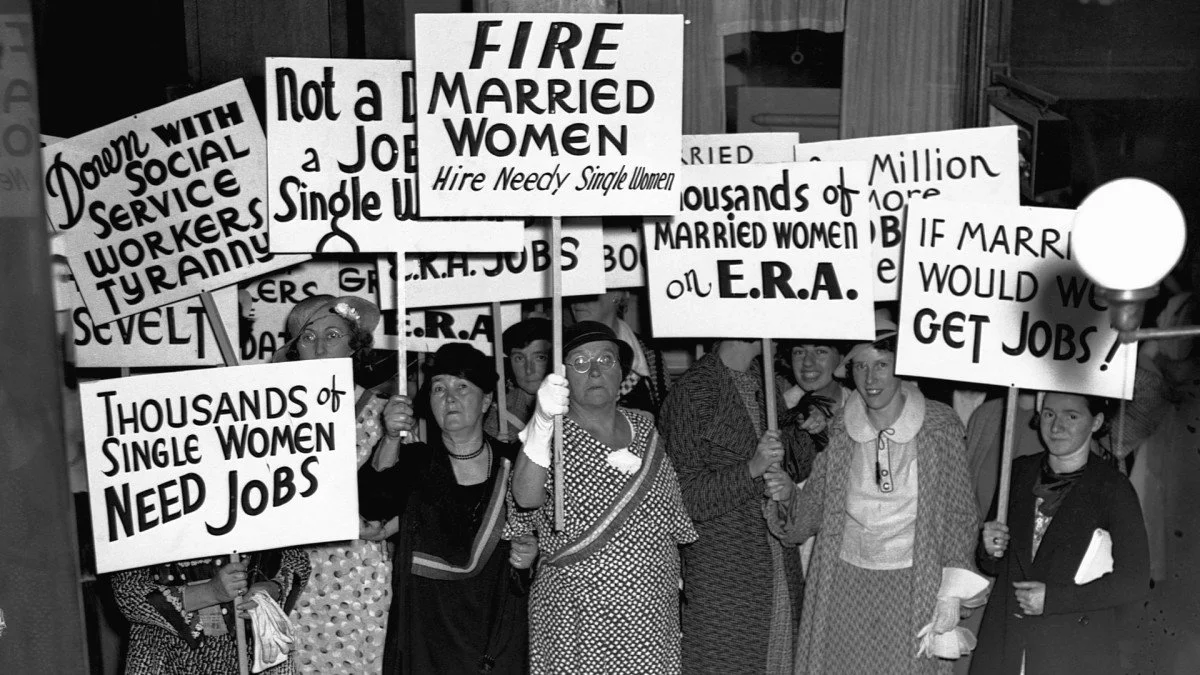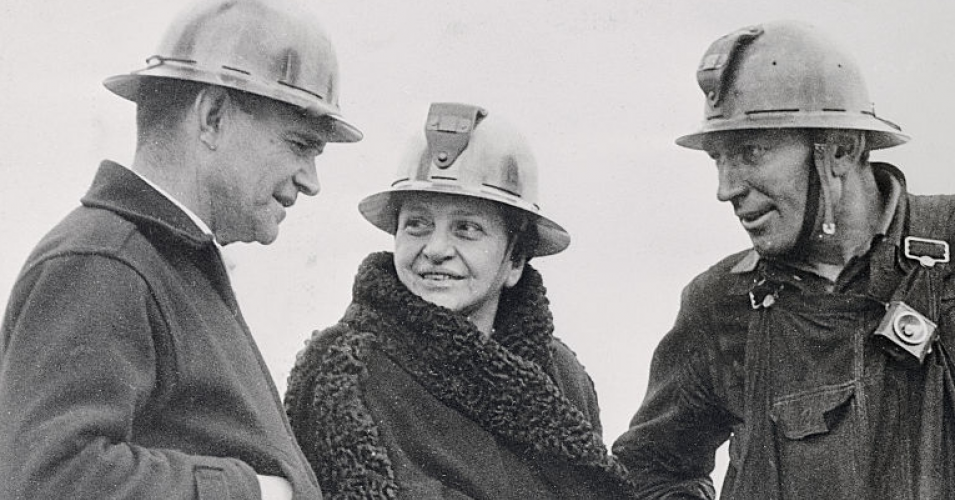A NEW DEAL FOR WOMEN -- THE SHE-SHE-SHE
MANHATTAN — 1932 — On a bright fall morning in a dull and dingy employment office, two dozen women sat in silence. Most had been there for hours. All were hungry, having gone without breakfast. All stared at the floor, ashamed to make eye contact. These were the women of the Depression.
We all know the face of the Migrant Mother. But we never saw the face of migrant single woman, some two million unemployed “girls.” Thousands rode the rails, risking rape or worse. Others laid low. “Men thronged the bread lines while women hid their plight,” said a member of the National Women’s Party.
Desperate women “will go for weeks verging on starvation,” wrote Meridel LeSeuer, “crawling in some hole, going through the streets ashamed, sitting in libraries, parks, going for days without speaking to a living soul like some exiled beast. . . What happens to them? Where do they go?”
The New Deal put millions of men to work. FDR’s Civilian Conservation Corps (CCC), the most successful of all New Deal programs, employed 2.5 million men in forestry, construction, and public works. But the CCC had barely begun when Eleanor Roosevelt asked, “What about the women?”
A CCC for women? Even FDR’s supporters were skeptical. Married women should stay at home. Single women should gussy up and find a man. And besides, there would be “serious discipline problems if women were brought together to live.”
But Labor Secretary Frances Perkins liked the idea. Other New Dealers agreed and in June 1933, 17 women were bused from Manhattan to a camp in Bear Mountain, New York. Critics mocked the “She-She-She” — another boondoggle. Eleanor knew better.
“As a group women have been neglected in comparison with others,” the First Lady said, “and throughout this depression have had the hardest time of all.” But six weeks after Camp TERA opened, Eleanor drove from her home in Hyde Park for a visit. She was disappointed. Instead of seeing 200 women hard at work, she saw just 20 women, resting. Of the 700 applicants, all but a handful had been turned down.
Sensing an enemy within, Eleanor called a White House Conference on Women’s Unemployment. There, with the support of New Deal relief coordinator Harry Hopkins, she announced the expansion of the small program. These “social and educational laboratories” would open coast to coast. The She-She-She began to rise .
By 1935, 90 camps were employing 5,000 women. In Kingsburg, North Carolina. In Weiser, Idaho. In Wolf Lake, Illinois. . . Smaller than CCC camps, the She-She-Shes gathered women in empty schools, closed hotels, and vacant lumber camps. Each housed 100 women earning $5 a month for 60 hours of work. Some sewed hospital bedding. Others repaired toys, made clothes, or worked in nearby forests. Spirits were high as women staged plays, sang, hiked, and took classes. Men were amused.
When a reporter for the CCC newspaper, Happy Days, visited Camp TERA, he noted how little work the “girls” did and how they suffered “fatigue.” He added: “Some of the girls are pretty. All are happy. They say they may never want to go back to New York, from where they came. Life has been tough for most of them.” Several “stews and clowns,” the reporter wrote, “make a practice of calling the camp over the phone and trying to date the girls. You can’t date the girls.”
More serious critics accused the camps of promoting communism. When several women snuck out one night to visit a neighboring CCC camp, eyebrows were raised. “It was a most unnatural environment for these women,” said a She-She-She camp director. “No one had thought that sexual isolation would be a problem.”
The camps continued into FDR’s second term. But with pressure mounting to curb deficit spending, the She-She-She program fell under the budget axe. In 1937, all camps were closed. The women went back home, if they had a home. By 1940, half of all single women were still unemployed.
You can find the legacy of the CCC across America. Lodges, roads, and trails. Three billion trees. Three thousand fire towers. Whole lives built or re-built. But what about the women?
The She-She-She gets barely a sentence in New Deal histories. The program was “short-lived,” “much smaller,” and “brought only temporary respite. . .” Some 8,000 women knew better. Though not allowed to build towers or lodges, the women built, or re-built, friendships, lives, and self-respect.
“The camp was ideal for building up run-down bodies and renewing jaded spirits,” wrote Civil Rights pioneer Pauli Murray of Camp TERA. Another woman remembered, “It seemed like someone did have an interest in whether we lived or starved. And was trying to help.”















